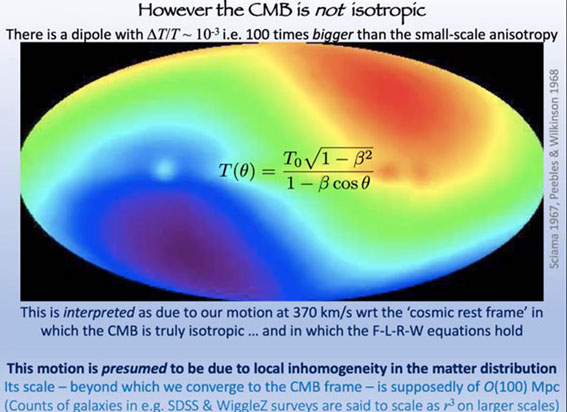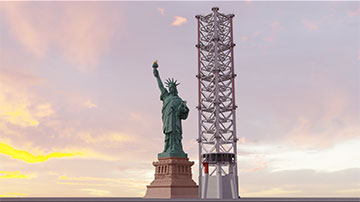Greetings from Palmia Observatory
In the June 6 blog post we asked if anyone was going to visit the US east coast to see the annular solar eclipse on June 10?
Well, no one responded in the positive, so I reached out to Moved to Canada, Charles, to see if he was going to watch the eclipse. We had thought of travelling to the east coast and even to Canada, but the quarantine requirements there were still quite severe so we elected not to go. Even flying to the east coast had its own set of problems.
Luckily, Charles agreed to get up early and take a photo of the eclipse, even though all he had was his cell phone. Here we see Charles' image of the annular eclipse taken in Cape Breton, Nova Scotia.
 |
| Cellphone image with pinhole view of the June 10 annular eclipse (Source: Moved to Canada, Charles) |
Charles said he got up early and made a pinhole camera and snapped that image. Thank your for that Charles! After seeing that image, I elected to make my own pinhole camera and take another image of the sun. I have lots of friends at Amazon, who are always sending me stuff in boxes, most of which can be used to make a camera.
I wonder how I would have responded if someone in another country or really anywhere asked me to get up early and go outside, I might have used my same friends at Amazon to order a shotgun. No, not to shoot those varmints, but to shoot that varmint, the alarm clock!
In this next photo, you can see a bright little dot of the sun showing up on a white cardboard after passing through the pinhole camera.
 |
| Pinhole camera image of the sun (Source: Palmia Observatory) |
This is the pinhole camera, with box provided by my friends at Amazon, who are always leaving stuff on my doorstop. The tin foil glued to the top was used to allow for different size pinholes to be selected.
 |
| Your friends at Amazon provide the main pinhole camera component (Source: Palmia Observatory) |
Just in case you are wondering what the sun looks like now, you can move up the camera line a little bit and image it with DSLR and 300mm lens with filter. Hmm, not many visible sunspots now.
 |
| June 12 image of sun with DSLR, 300mm, 1/500 second (Source: Palmia Observatory) |
In other astronomy lecture series news, the latest Golden Webinar was by Professor Subir Sarkar, U. of Oxford, who spoke on "Testing the Cosmological Principle." He talked about how much of astronomy today is dependent on the models used to develop grand cosmological theories. Just consider two of the greatest mysteries of modern day astronomy: What is Dark Matter and What is Dark Energy? Both are invented as ways to explain the observations and to bring the observations into agreement with the current best cosmological models.
He started off with a great 1978 quote from Dennis Sciama, which is repeated here in case the text in the screenshot is not completely readable" "None of us can understand why there is a Universe at all, why anything should exist; that is the ultimate question. But while we cannot answer this question, we can at least make progress with the next simpler one of what the universe as a whole is like."
 |
| Testing the Cosmological Principle (Source: Subir Sarkar, Golden Webinar, June 11, 2021) |
We are bound by the cosmological principle because we cannot just pick up our scopes and move to different parts of the universe. We cannot escape our path on our world line and associated light cone and can never know what happens or happened on some other distant region with its separate and non-interacting light cone.
 |
| The Cosmological Principle and limits of special relativity (Source: Subir Sarkar, Golden Webinar) |
When we consider one of the most distant light cones that comes to us, such as the Cosmic Microwave Background (CMB) we use our models to sort of adjust the data to match the cosmological principle. The model and data agree very well and it is accurate enough that predictions can be made and new observations compared. The cosmological models that fit the data are where the estimated amount of dark matter and dark energy come from.
 |
| CMB model is a near perfect match to LDCM model (Source: Subir Sarkar, Golden Webinar) |
When we look at the raw CMB data as it is downloaded from the Planck satellite, we see the famous dipole pattern. This data image is not the same as the nearly uniform distribution seen in the previous slide, because we now see the motion of our own galaxy compared to the CMB. It is only when this motion and other bright nearby microwave sources are subtracted out do we get the clean image that we have seen many times.
Subir asks the question, "Could we not instead be in some special location in the universe and we only think we are correcting for our local motion"? He and others are looking into the data and looking for possible observations to better confirm this basic assumption. We need to follow up on Sabir's research and find out more about this type of study. It might be that the need for dark matter and dark energy, just like the assumed solutions to the quantum mechanics measurement problem and the collapse of the wave function, all come about because one or more of our most basic assumptions about the nature of the universe is just not quite correct. For now thought, it is just business as usual because the models are so accurate and beautiful!
 |
| Looking at dipole motion in raw CMB data (Source: Subir Sarkar, Golden Webinar, June 11, 2021) |
Finally, in other news from Boca Chica and ongoing SpaceX work on the sub-orbital launch tower, we found this artists rendering comparing the launch tower with the Statue of Liberty. Wow, the launch tower is going to be really tall when completed. The height of the Statue of Liberty is something like 305 feet and the height of the Starship with Booster is taller at around 390 feet. We have seen so far 2 or three tower sections stacked together and the remaining sections are nearing completion in the production area and ready to roll down State Highway 4 to the launch site. Gotta get back to Boca Chica and watch all the work!
 |
| Artist's comparison of height of Starship launch tower and Statue of Liberty (Source: unknown Tweet) |
Until next time, here from our burrow, stay safe, as we recover more of our freedom,

No comments:
Post a Comment